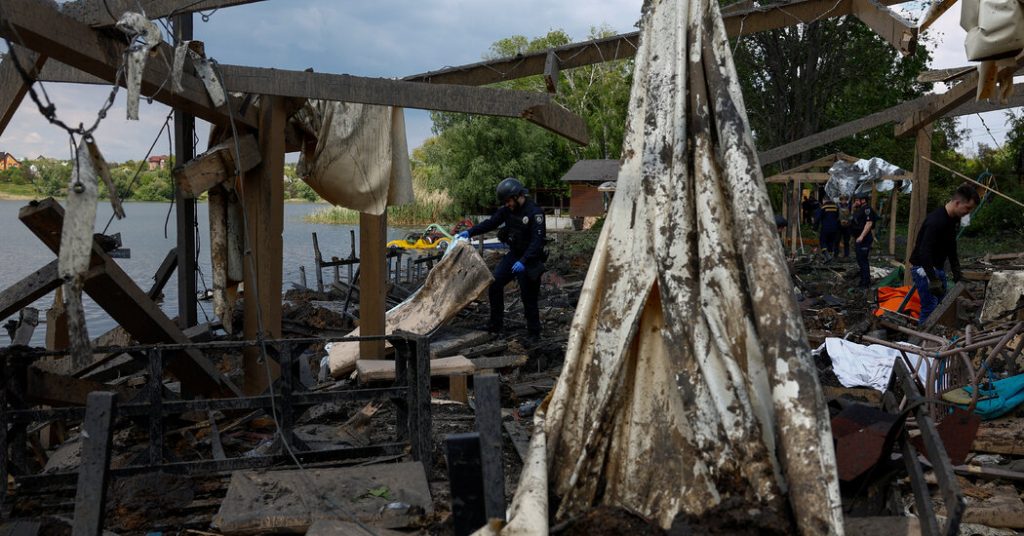On Sunday, Russia and Ukraine engaged in a series of drone attacks and airstrikes that targeted each other’s territory, hitting urban centers and energy facilities in an effort to inflict damage beyond the battlefield. The Russian military claimed to have shot down nearly 60 Ukrainian drones over the Krasnodar region of southwest Russia, home to energy and military facilities. Ukrainian drones reportedly struck an oil refinery and a military airfield in the region, according to local Russian officials and a Ukrainian security official. In retaliation, Russia targeted northeast Ukraine, including the city of Kharkiv, resulting in the deaths of at least 10 civilians and injuring more than 20 people.
Russia has had the upper hand on the battlefield since the fall, allowing it to launch assaults on different parts of the more than 600-mile front line to probe and break through Ukrainian defenses. In recent months, Russia has opened a new front in Ukraine’s northeast near Kharkiv, quickly capturing settlements and forcing the Ukrainian army to redeploy units from other hot spots. With Russia seeking to break through thinned-out Ukrainian lines, Ukraine is focusing on disrupting Moscow’s military operations by targeting logistical hubs and troop concentrations deep behind enemy lines, in an effort to relieve troops struggling to contain Russian advances.
Ukraine’s strategy to disrupt Russia’s slow but steady advance includes a sustained air campaign targeting Russian facilities that supply fuel and other oil products to tanks, ships, and fighter jets. The campaign aims to undermine the Russian energy industry, which is crucial to Russia’s economy and war effort. The United States reported that these strikes had disrupted about 14 percent of Russia’s oil refining capacity, leading to a rise in domestic gasoline and diesel prices by 20 to 30 percent in Russia. The strategy also involves targeting Crimea, the Ukrainian peninsula annexed by Russia in 2014, which has been used as a military logistics hub and launchpad for drone and missile attacks.
Over months of bloody assaults, Russia has gradually regained territory from Ukraine, gaining more land this year than it lost during Ukraine’s summer counteroffensive last year, according to analysts. The clashes between Russia and Ukraine have been intense, with more than 80 Russian attacks reported on Saturday alone, many in the southeast Donetsk region, which Russia annexed but does not fully control. Ukraine’s military successfully repelled a large Russian tank attack on Chasiv Yar, a Ukrainian stronghold in the Donetsk region. As Russia continues its advances and Ukraine seeks to disrupt its operations, the conflict shows no signs of abating, with both sides escalating their drone attacks and airstrikes in a bid to gain the upper hand on the battlefield.
Amidst the ongoing conflict, the civilian population in urban centers like Kharkiv are bearing the brunt of the violence, with casualties reported and residents forced to flee due to Russian missile strikes. The clashes between Russia and Ukraine are intensifying, with both sides targeting each other’s energy facilities and military infrastructure in a bid to gain an advantage in the protracted conflict. Despite international efforts to negotiate a ceasefire and end the bloodshed, the situation remains volatile, with Russia seeking to advance its military operations in Ukraine and Ukraine striving to disrupt and repel Russian assaults by targeting key logistical hubs and facilities deep behind enemy lines.


